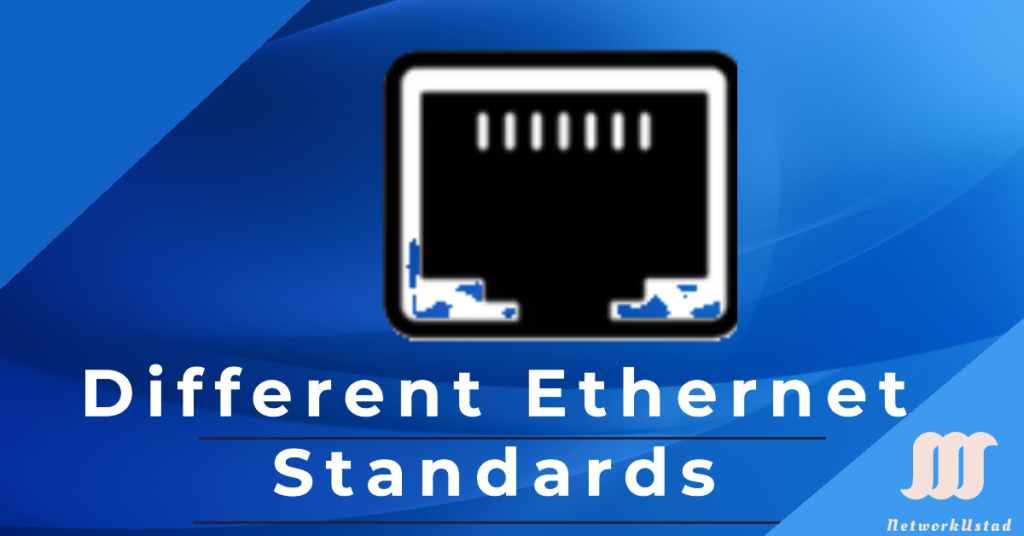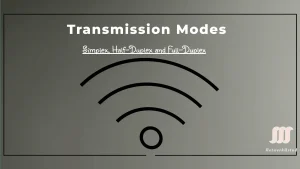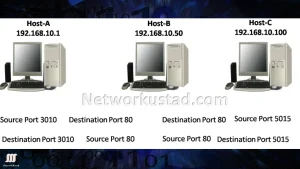In 2025, Ethernet standards remain the cornerstone of reliable, high-speed networking for homes, businesses, and data centers. From streaming 8K videos to powering smart cities, Ethernet’s balance of speed, affordability, and scalability makes it the go-to technology for wired networks. This guide explores Ethernet’s evolution, key standards, and how to choose the right one for your needs.
How Ethernet Works: Physical and Data Link Layers
Ethernet operates at the Physical Layer (Layer 1) and Data Link Layer (Layer 2) of the OSI model. The Data Link Layer is divided into two sublayers:
- Logical Link Control (LLC): Manages communication between the network layer and the MAC sublayer.
- Media Access Control (MAC): Handles device addressing and data frame transmission.
The IEEE 802.3 standard defines Ethernet’s protocols and technologies, ensuring interoperability across devices.
Key Ethernet Standards
Ethernet is a widely adopted LAN technology, defined by the IEEE 802.3 standard. Below are the major standards shaping networks in 2025.
Standard Ethernet
The original Ethernet standard supports data rates up to 10 Mbps. It’s rarely used today due to higher-speed alternatives but laid the foundation for modern networking.
Fast Ethernet
Fast Ethernet, defined by IEEE 802.3u, increases speeds to 100 Mbps. It supports multimedia, gaming, and internet browsing with improved error detection. Key types include:
- 100BASE-TX: Uses Cat-5 or Cat-6 UTP cables, common in older networks.
- 100BASE-FX: Uses fiber optic cables for longer distances and noise immunity.
- 100BASE-T4: Obsolete, used Cat-3 cables (rarely seen today).
Gigabit Ethernet
Gigabit Ethernet, part of IEEE 802.3, delivers 1 Gbps speeds—10 times faster than Fast Ethernet. It’s ideal for multimedia, VoIP, and high-performance LANs, often used to connect switches, routers, and servers..
10 Gigabit Ethernet
This is the fastest and most recent Ethernet standard. IEEE 802.3ae defines a version of Ethernet with a nominal rate of 10 Gbits/s. 10 Gigabit Ethernet is 10 times faster than Gigabit Ethernet. It is based entirely on optical fiber connections, unlike other Ethernet.
25 Gigabit Ethernet
Introduced for data centers, 25GbE (IEEE 802.3by) provides 25 Gbps speeds, balancing cost and performance for cloud computing.
40 Gigabit Ethernet
40GbE (IEEE 802.3ba) supports 40 Gbps, used in high-density data centers for server-to-switch connections.
100 Gigabit Ethernet
100GbE (IEEE 802.3ba) delivers 100 Gbps, critical for backbone networks and hyperscale data centers.
400 Gigabit Ethernet
Emerging in 2025, 400GbE (IEEE 802.3bs) offers 400 Gbps, targeting AI workloads, 5G backhaul, and ultra-high-bandwidth applications.
| Standard | Speed | Cable Type | Use Case | Cost |
|---|---|---|---|---|
| Standard Ethernet | 10 Mbps | Coaxial/UTP | Legacy systems | Low |
| Fast Ethernet | 100 Mbps | Cat-5/Fiber | Small offices | Low |
| Gigabit Ethernet | 1 Gbps | Cat-5e/Cat-6/Fiber | Home, SMBs, gaming | Medium |
| 10GbE | 10 Gbps | Fiber/Cat-6a | Data centers, enterprises | High |
| 25GbE | 25 Gbps | Fiber | Cloud computing | High |
| 40GbE | 40 Gbps | Fiber | Data centers | Very High |
| 100GbE | 100 Gbps | Fiber | Backbone networks | Very High |
| 400GbE | 400 Gbps | Fiber | AI, 5G, hyperscale | Ultra High |
Power over Ethernet (PoE)
PoE (IEEE 802.3af/at/bt) delivers power and data over Ethernet cables (Cat-5/6), reducing cabling needs. Modern 802.3bt supports up to 90W, powering IoT devices like IP cameras, smart lights, and wireless access points.
Choosing the Right Ethernet Standard
Selecting an Ethernet standard depends on your needs:
- Home Networking: Gigabit Ethernet (1 Gbps) is sufficient for streaming, gaming, and smart devices. Use Cat-6 cables for future-proofing.
- Gaming: 10GbE reduces latency for competitive gaming, especially with cloud gaming platforms.
- Small Businesses: Gigabit or 10GbE supports VoIP, cloud apps, and file sharing.
- Data Centers: 25GbE, 40GbE, or 100GbE for high-density, low-latency connections.
Future of Ethernet in 2025
Ethernet continues to evolve:
AI and Big Data: 400GbE powers AI training and analytics.
IoT and Smart Homes: Multi-gigabit Ethernet (2.5GbE/5GbE) supports connected devices.
5G Integration: 100GbE and 400GbE enable 5G backhaul.
Energy Efficiency: Green Ethernet reduces power consumption.
FAQs
What are the different types of Ethernet standards?
Ethernet standards include Standard Ethernet (10 Mbps), Fast Ethernet (100 Mbps), Gigabit Ethernet (1 Gbps), 10GbE (10 Gbps), 25GbE (25 Gbps), 40GbE (40 Gbps), 100GbE (100 Gbps), and 400GbE (400 Gbps)How do Fast Ethernet and Gigabit Ethernet differ?
Fast Ethernet supports up to 100 Mbps, while Gigabit Ethernet supports up to 1 Gbps, offering better performance for multimedia and VoIP.What is the maximum speed of Ethernet?
The maximum speed of Ethernet in 2025 is 400 Gbps with the 400GbE standard.Which Ethernet standard is best for home networking?
Gigabit Ethernet (1 Gbps) is recommended for home networking due to its speed, affordability, and compatibility.How do Ethernet standards impact network performance?
Ethernet standards determine the speed, reliability, and efficiency of data transmission in a network.





